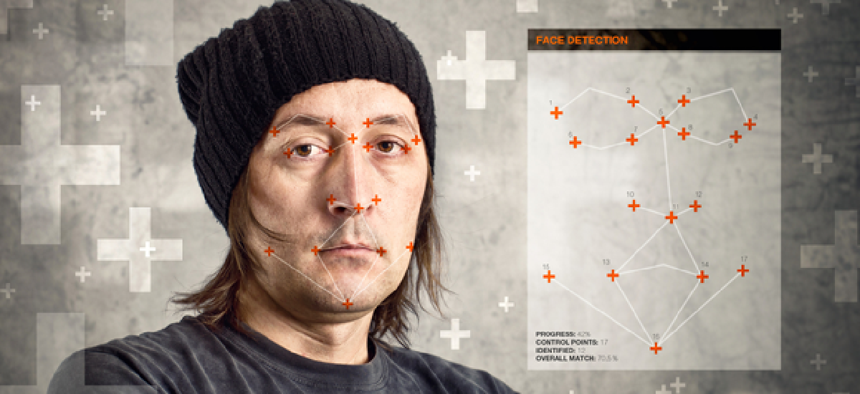A closer look at facial recognition

Facial recognition is emerging as an authentication method more accurate than passwords – but how do these systems work?
As facial recognition technology matures, its use is being debated as a method for authenticating users’ identities. Facial recognition has been leveraged by law enforcement for border security and criminal identification and could be used to limit access to secure facilities -- but the technology behind the buzzword is not widely understood.
According to a recent Government Accountability Office report, there are four basic uses for this technology:
- Detecting a face in an image.
- Estimating personal characteristics, such as age, race or gender.
- Verifying identity by accepting or denying the identity claimed by a person.
- Identifying an individual by matching an image of an unknown person to a gallery of known people.
But how does it work? According to GAO, there are four components to a facial recognition system: the camera, the algorithm to create a faceprint (sometimes called a facial template), a database of stored images and the algorithm that compares the captured image to the database of images.
The most basic use of facial recognition technology compares a captured image of a face to a model or template to determine that enough similarities exist to verify that a face is present in the image. Next, the system will create the “faceprint” one of three ways. A geometric approach calculates the spatial relationship between eyes, nose and mouth. The photometric approach in which the system can interpret a face as a weighted combination of standardized faces, and the third approach analyzes the location of identifying characteristics such as pores, lines and spots in the skin. These methods can be used separately or in combination, which will improve accuracy.
Once the system analyzes the image using these faceprint algorithms, it standardizes the image so it is in the same format as other images in the database.
At that point, the system can use the faceprint to help determine gender or estimate age. It can also compare two faceprints (a current photo vs. a stored image) to spot similarities and help confirm identity. The algorithms also allow the identification system to compare a captured image to a database of stored faceprints.
While facial recognition systems are not foolproof, their accuracy is improving. In a Face Recognition Vendor Test in 2014, the National Institute of Standards and Technology found that error rates have been declining as algorithms get better at identifying individuals from poor quality images.
NEXT STORY: NIST issues SHA-3 cryptographic hash standard





